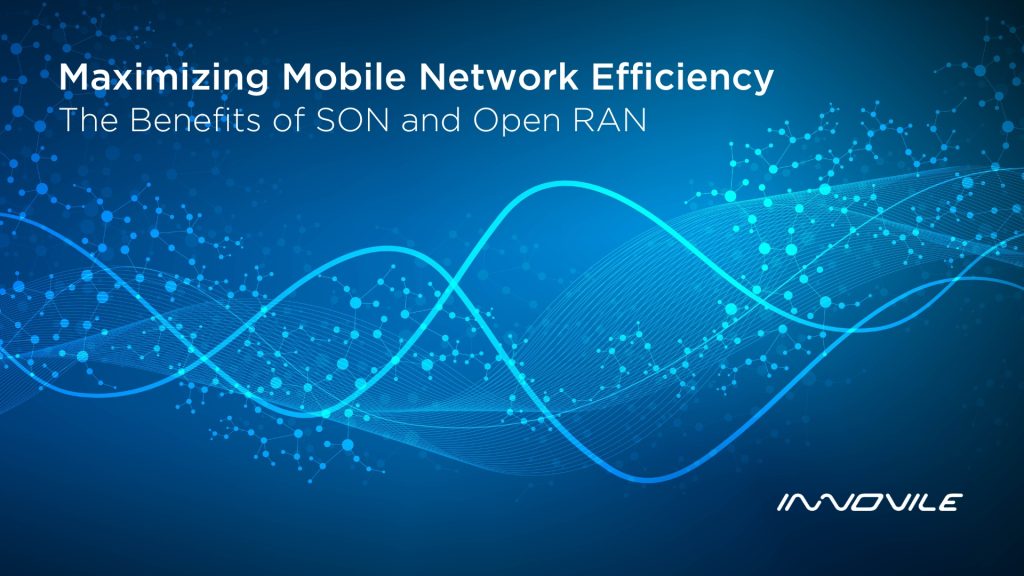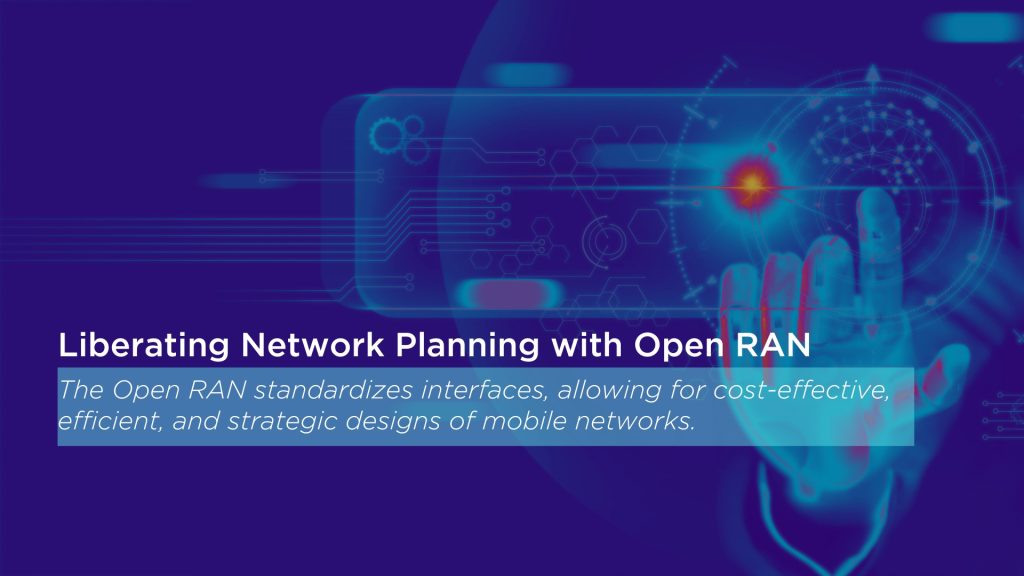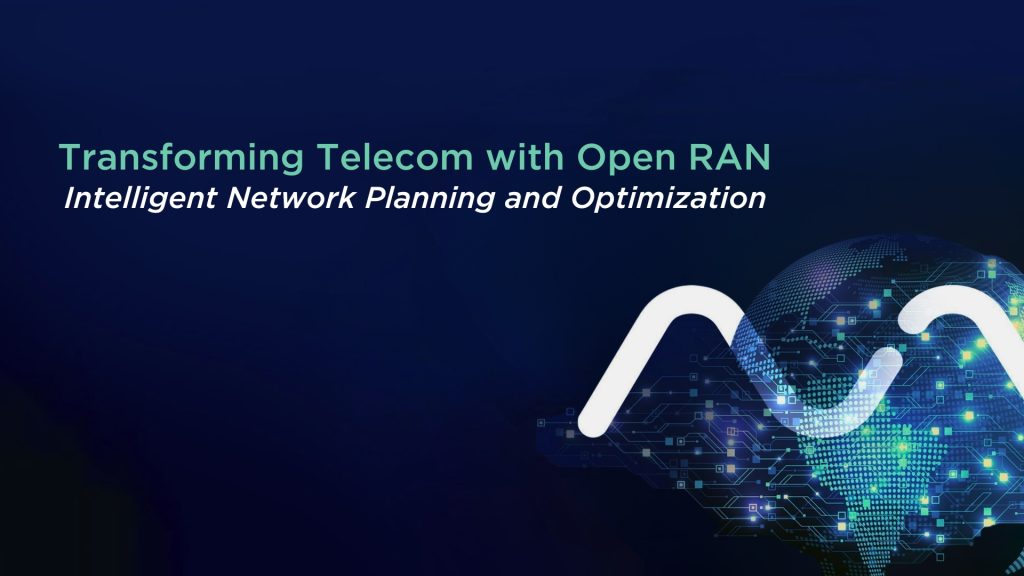Introduction to Open RAN Network
The Open RAN (O-RAN) network is an evolution and a revolution in Radio Access Networks (RAN) architecture. It emerges from the convergence of software-defined networking (SDN), cloud computing, and 5G technologies, introducing a modular approach to RAN that sparks greater flexibility and innovation. Unlike traditional RAN setups, which are vendor-specific and monolithic, Open RAN disrupts the status quo by disaggregating hardware and software, fostering a competitive and innovative ecosystem.
Advancements in Mobile Network Planning
Open RAN is a game-changer in mobile network planning, liberating Mobile Network Operators (MNOs) from the constraints of single-vendor solutions. With standardized interfaces, MNOs can now mix and match components from different vendors, reducing costs and enhancing the efficiency and effectiveness of mobile network planning. This translates to more strategic and adaptable network designs, a clear win for the industry.
Enhancing Network Planning and Optimization
Open RAN is critical to the efficient operation of modern telecom networks. It enables advanced network planning and optimization by providing greater control and flexibility over network components. By leveraging open interfaces and modular components, MNOs can optimize network performance in real time, ensuring high-quality service and efficient resource utilization. Integrating AI and ML technologies further enhances network optimization, enabling predictive maintenance and automated performance tuning, instilling confidence in the technology’s capabilities.
Leveraging Network Intelligence in Open RAN
Network intelligence is the backbone of Open RAN networks, and it’s powered by the latest in AI and ML technologies. The O-RAN architecture integrates components like the RAN Intelligent Controller (RIC), which is a testament to the power of Artificial Intelligence (AI) and Machine Learning (ML) in enhancing network performance. These intelligent systems are not just data analyzers, but they’re predictive tools that can foresee traffic patterns and identify potential issues before they impact service quality, a level of foresight that was once unimaginable.
RAN Intelligent Controller (RIC)
The RIC is divided into two main components: the Near-Real-Time RIC and the Non-Real-Time RIC. The Near-Real-Time RIC is responsible for immediate control and optimization of the RAN functions, operating on a sub-millisecond timescale. It employs xApps, specialized software applications designed to monitor and optimize Key Performance Indicators (KPIs) such as User Equipment (UE) measurements and E2 Node metrics. By doing so, real-time adjustments can be made to maintain optimal network performance. The Near-Real-Time RIC handles immediate network adjustments, such as traffic steering and load balancing.
The Non-Real-Time RIC, on the other hand, focuses on long-term network optimization strategies. It uses rApps to handle non-real-time configurations and guide the Near-Real-Time RIC. By analyzing historical data and applying AI/ML models, the Non-Real-Time RIC can optimize higher-layer procedures, policy decisions, and overall network resource management. This two-tiered approach ensures a comprehensive optimization strategy that addresses immediate and long-term network performance needs. The Non-Real-Time RIC focuses on strategic optimization tasks like capacity planning and predictive maintenance.

RAN Intelligent Controller (RIC)
The RIC is divided into two main components: the Near-Real-Time RIC and the Non-Real-Time RIC. The Near-Real-Time RIC is responsible for immediate control and optimization of the RAN functions, operating on a sub-millisecond timescale. It employs xApps, specialized software applications designed to monitor and optimize Key Performance Indicators (KPIs) such as User Equipment (UE) measurements and E2 Node metrics. By doing so, real-time adjustments can be made to maintain optimal network performance. The Near-Real-Time RIC handles immediate network adjustments, such as traffic steering and load balancing.


AI and ML in Mobile Network Optimization
AI and ML technologies are central to the intelligence of O-RAN networks. These technologies enable the RIC to process large datasets, identify patterns, and make predictive decisions. For example, AI algorithms can predict traffic surges and adjust network resources accordingly to prevent congestion. ML models can continuously learn from network data to improve accuracy and efficiency in managing network resources.
AI/ML algorithms continuously monitor and analyze metrics such as signal strength, PRB usage, and PDCP throughput. These metrics provide critical insights into network performance and are used to make real-time and long-term optimization decisions. The goal is to ensure the network can adapt dynamically to changing conditions, providing seamless and high-quality service to users.

AI and ML in Mobile Network Optimization
AI and ML technologies are central to the intelligence of O-RAN networks. These technologies enable the RIC to process large datasets, identify patterns, and make predictive decisions. For example, AI algorithms can predict traffic surges and adjust network resources accordingly to prevent congestion. ML models can continuously learn from network data to improve accuracy and efficiency in managing network resources.
The Proactive Approach to Network Management
By leveraging network intelligence through the O-RAN architecture, telecom operators can adopt a proactive approach to network management. Instead of reacting to issues after they arise, AI and ML enable the network to anticipate problems and implement solutions in real time. This enhances network reliability and efficiency and significantly reduces downtime and operational costs. In summary, integrating network intelligence in Open RAN through AI and ML, coupled with the sophisticated capabilities of the RIC, represents a transformative approach to network optimization. This proactive, data-driven strategy ensures that telecom networks are robust, efficient, and capable of evolving to meet future demands in a dynamic digital landscape.The Synergy of Open RAN and Self-Organizing Networks (SON)
Self-organizing networks (SON) are crucial in legacy 4G and emerging 5G networks. They automate network optimization tasks to reduce operational complexity and costs while enhancing overall network performance. In an Open RAN environment, the integration of SON technologies is further amplified through standardized interfaces and a modular architecture, driving significant improvements in network performance and operational efficiency.
Outsourcing network management significantly boosts operational efficiency, reduces workload on internal teams, and allows telecom companies to focus on strategic growth and innovation. This efficiency is achieved through advanced management tools and technologies that streamline operations and quick issue resolution.
Moreover, managed services can lead to considerable cost savings for telecom companies. Outsourcing converts fixed costs related to technology, infrastructure, and staffing into variable expenses, providing flexibility and scalability. This model lowers capital expenditure and makes operational costs more predictable and manageable.
The Role of SON in 4G and 5G Networks
In 4G networks, SON technologies were primarily used to automate repetitive and complex network management tasks. These included tasks like Physical Cell Identifier (PCI) allocation, Automated Neighbor Relations (ANR), and interference management. By automating these processes, SON significantly reduced the need for manual interventions, leading to lower operational costs and more efficient network performance.
With the advent of 5G, the importance of SON has only increased. The complexity and density of 5G networks demand more advanced and dynamic optimization solutions. SON technologies in 5G networks address the traditional optimization tasks and the new challenges posed by the increased number of connected devices, higher data rates, and more stringent latency requirements. This evolution requires more sophisticated algorithms and real-time data analysis capabilities inherent to SON.
Innovative Network Management with INNTELLIGENT SON Solution: A Detailed Overview of Architecture and Modules
Introduction to SON Modules
Self Organizing Network (SON) modules are crucial in optimizing modern telecom networks. These advanced solutions enable dynamic management and automation of network functions, ensuring seamless performance across various environments. INNTELLIGENT’s suite of SON modules demonstrates real-world applications that enhance network efficiency and reliability. Let’s delve into some of the key modules and their contributions to network optimization in telecom.Real-world Applications of INNTELLIGENT's SON Modules
The Area Code Optimizer, a key SON solution, optimizes area codes to enhance resource allocation. This self-organizing network module ensures that each area code efficiently handles peak loads, thus reducing call drops and improving overall network performance by analyzing user distribution and traffic patterns. It directly translates to a better user experience and more efficient network management.
The Cross Finder SON module identifies and rectifies instances of crossed connections. This solution is particularly useful in complex network environments where such issues can significantly impact service quality. By automatically detecting and correcting these anomalies, Cross Finder ensures seamless communication and enhanced user satisfaction.
The Mobility Robustness Optimization SON network module ensures that users experience minimal call drops and interruptions while moving, especially in high-speed transit scenarios like trains or highways. This module optimizes handover parameters to maintain robust connections, providing a smooth communication experience for users on the move.
The Coverage Optimization SON solution adjusts electrical tilts to enhance signal strength and coverage in highly populated cities and rural or underserved areas. By fine-tuning the network setup, this module ensures that even the most remote locations receive adequate coverage, improving accessibility and user experience. Additionally, addressing instances of excessive coverage helps balance network usage and prevents unnecessary signal interference.
The Interference Detection SON module is crucial in environments with high cell density, such as urban centers or event venues. This self-organizing network solution continuously monitors for interference, adjusting network parameters to mitigate its impact and ensure clear, reliable communication for all users.
The Auto Frequency Planning SON module (2G) automates the frequency planning process for 2G networks, ensuring optimal frequency allocation and minimizing interference. This solution is particularly beneficial in regions where 2G is still widely used, providing efficient and reliable service.
The Special Event Real-time Optimization SON solution dynamically adjusts network parameters to handle the high demand during mass events like concerts or sports games. This module operates in real-time (for vendors that support this feature) and includes pre-event and post-event optimization capabilities. Optimizing network performance before, during, and after the event ensures that attendees experience seamless connectivity despite the surge in traffic.
The Cell Outage, Detection, and Compensation SON module automatically detects cell outages, reconfigures neighboring cells, and applies electrical tilt changes to cover the affected area. This solution ensures minimal disruption and maintains service quality, crucial for emergencies and user trust.
The Automatic Performance Reports SON module generates detailed analyses of network performance, providing operators with insights into various metrics. This solution helps identify trends, pinpoint issues, and plan improvements, ensuring the network remains efficient and reliable.
The Real-Time Alerts feature of our SON modules notifies network operators of critical events and anomalies as they happen, enabling immediate action. This proactive approach empowers MNOs to maintain network integrity and prevent issues from escalating, ensuring consistent service quality.
The API module, a testament to the flexibility of our SON solutions, allows for seamless integration of third-party solutions and applications, enhancing the network management system's functionality. APIs enable you to customize and extend your network's capabilities according to your specific needs, putting you in control of your network solutions.
The SDK module provides operators the tools to develop custom SON modules tailored to their unique requirements. This operator-specific module effectively addresses operational challenges, enhancing overall network performance and efficiency.
The Intelligent Energy Saving SON solution optimizes energy consumption across the network, reducing operational costs and environmental impact. This module adjusts power usage based on traffic patterns, ensuring energy is used efficiently without compromising service quality.
The Load Balancing SON module helps distribute network traffic evenly across available resources. This solution prevents congestion and ensures optimal performance during peak hours, maintaining service quality and improving user experience even when network demand is high. It plays a crucial role in effectively managing mobile network traffic.
The Capacity Optimization SON module actively ensures efficient utilization of network resources to maximize capacity and performance. This solution continuously monitors and adjusts network parameters to achieve peak efficiency, delivering reliable service to all users.
The Benefits of SON and Open RAN Synergy
The synergy between SON and Open RAN brings several critical benefits to telecom operators:

Improved Network Performance: Combining SON technologies and Open RAN architecture results in more efficient and effective network optimization. This synergy ensures high-quality service delivery, reduced latency, and enhanced user experience.
Operational Efficiency: Automating network optimization tasks reduces the need for manual interventions, lowering operational costs and minimizing the risk of human errors. This operational efficiency translates to cost savings and more streamlined network management processes.
Scalability and Flexibility: Open RAN’s modular architecture and SON’s dynamic optimization capabilities allow telecom operators to scale their networks more efficiently. This scalability is crucial for accommodating future growth and adapting to emerging technologies.
Innovation and Competition: Open RAN’s open interfaces and standardized protocols foster a competitive ecosystem where multiple vendors can offer innovative solutions. This competition drives down costs and encourages continuous innovation in network optimization technologies.
Open RAN: Charting the Path to a Flexible and Efficient Telecom Future
The future of Open RAN looks exceedingly promising, with ongoing developments in standardization and technology integration paving the way for a more dynamic and versatile telecom landscape. As the O-RAN Alliance continues to refine specifications and interfaces, the Open RAN ecosystem is set to become more robust and adaptable. Innovations in artificial intelligence (AI), machine learning (ML), and cloud computing are poised to enhance the capabilities of Open RAN significantly, driving the telecom industry toward a more flexible, efficient, and customer-centric future.
Standardization and Interoperability
Standardization is critical to the advancement of Open RAN. The O-RAN Alliance is dedicated to developing open, interoperable standards that ensure seamless integration across various network components and vendors. This standardization facilitates a competitive market, driving down costs and spurring innovation as multiple vendors can contribute to the ecosystem.AI and Machine Learning Integration
Integrating AI and ML within the Open RAN framework transforms how networks operate. AI-driven analytics and ML algorithms enable predictive maintenance, automated network optimization, and advanced anomaly detection. These technologies allow real-time adjustments based on data-driven insights, enhancing network performance and reducing operational costs. For instance, AI can predict traffic patterns and optimize network resources accordingly, ensuring optimal performance even during peak usage.Cloud Computing and Virtualization
Cloud computing and network function virtualization (NFV) are essential to the flexibility and scalability of Open RAN. By decoupling hardware and software, network operators can deploy and manage network functions as virtual instances, scaled up or down based on demand. This cloud-native approach reduces the need for physical infrastructure, resulting in cost savings and increased operational efficiency.Enhanced Network Security
Open RAN’s modular architecture allows for more robust and flexible security implementations. Network operators can deploy security measures tailored to specific components or functions, enhancing overall network security. The use of AI and ML for real-time threat detection and response further strengthens the security posture of Open RAN networks.Edge Computing
Edge computing is another innovation driving the future of Open RAN. By processing data closer to the source, edge computing reduces latency and improves the performance of latency-sensitive applications such as autonomous vehicles and augmented reality. Open RAN’s flexible architecture supports the integration of edge computing, enabling faster and more reliable service delivery.Energy Efficiency
Sustainability is becoming increasingly important in the telecom industry. Open RAN supports energy-efficient network operations through intelligent energy management systems that dynamically adjust power usage based on network traffic. AI-driven energy optimization can significantly reduce the carbon footprint of network operations.Ecosystem Collaboration
The open nature of Open RAN encourages collaboration among telecom operators, vendors, and technology partners. This collaborative ecosystem fosters innovation and accelerates the development and deployment of new solutions. Mixing and matching components from different vendors allows operators to tailor their networks to meet specific needs and challenges.Future-Ready Infrastructure
Investing in Open RAN today positions mobile network operators (MNOs) to lead the next wave of telecom innovation. The modular, flexible architecture of Open RAN ensures that networks are future-ready and capable of adapting to new technologies and evolving market demands. This future-proofing is critical in a rapidly changing digital landscape where consumer expectations and technological advancements continuously evolve. In summary, the future of Open RAN is bright, with significant advancements in standardization, AI and ML integration, cloud computing, security, edge computing, energy efficiency, and ecosystem collaboration. These innovations drive the telecom industry towards more flexible, efficient, and customer-centric networks. MNOs investing in Open RAN are well-positioned to leverage advanced network planning and optimization techniques, delivering superior service quality and operational efficiency while staying ahead in a competitive and dynamic market.Conclusion
We encourage telecom operators and stakeholders to explore the benefits of partnering with leading managed service providers specializing in telecommunications. These experts can offer invaluable guidance and solutions tailored to your specific needs, ensuring your operations keep pace with technological advancements and are at the forefront of the industry’s transformation.
For those looking to stay ahead in the competitive telecom landscape, reaching out for a consultation or further information from managed service providers with a deep understanding of AI, 5G, and IoT applications in telecommunications could be the first step towards achieving operational excellence and delivering unmatched customer experiences.
Let’s embrace these changes with open arms and strategically integrate advanced service assurance and managed services into our operations. The future of telecommunications is bright, and by leveraging these technologies, we can unlock new levels of success and customer satisfaction.
